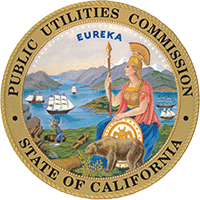Blog
Our blog fills you in on the news about our programs, decisions, hot topics, events, and more!
If you have something you’d like us to blog about, send your ideas to news@cpuc.ca.gov.
In the meantime, don’t forget to like us on Facebook, follow us on Twitter, Instagram, LinkedIn and Flickr, and subscribe to our YouTube page.
You can also subscribe to receive documents from us sent directly to your email. This free service allows you to obtain documents published on our website, such as press releases, Proposed Decisions, and final Decisions. You can follow a particular proceeding, industry, or type of document in a way that best meets your needs.
Thanks for reading.
